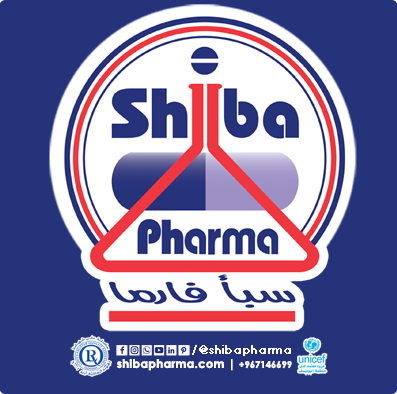Section :
Motilin
COMPOSITION :
Each tablet contains : Domperidone 10 mg.
Each 5 ml suspension contains : Domperidone 5 mg.
Each 1 ml suspension oral drops contains : Domperidone 1 mg.
DESCRIPTION :
Motilin (Domperidone) is a dopamine antagonist drug with anti-emetic properties,
Domperidone promotes the release of prolactin from the pituitary. Its anti-emetic effect may
be due to blocking peripheral dopamine receptors both in GI wall and the chemoreceptor
trigger zone, which lies outside the blood-brain barrier .Domperidone works by helping to
move food faster through oesophagus, stomach and gut. It also prevents flowing food back
up to oesophagus . Unlike metoclopramide and certain neuroleptic drugs, Domperidone
does not cross the blood brain barrier and hence it does not have any side effects to the
extrapyramidal region as associated with these drugs. Domperidone is rapidly absorbed
after oral administration and the peak plasma levels are achieved within 1 hour. The low
absolute bioavailability of oral dose (15%) is due to an extensive first pass metabolism in
liver by CYP3A4 enzyme. Domperidone is (91% - 93%) bound to plasma protein and it is
excreted (31%) in urine and (66%) in feces. The plasma half-life is 7 - 9 hours.
INDICATIONS :
Motilin is indicated in the treatment of the symptoms of nausea and vomiting.
DOSAGE & ADMINISTRATION :
Motilin should be used at the lowest effective dose for the shortest duration necessary to
control nausea and vomiting . The maximum treatment duration should not exceed one
week. It is recommended to take Motilin 15 to 30 minutes before meals. If taken after
meals, absorption of the drug is somewhat delayed. If a dose is missed, it should not be
doubled to compensate the missed dose.
- Adults and adolescents ≥ 12 years and weighing ≥ 35 kg : 1 tablet or 10 ml of oral
suspension up to three times per day with a maximum dose of 30 mg per day .
- Infants and children < 12 years and weighing < 35 kg : 0.25mg /kg 3 times a day.
- Patients with renal impairment : The dosing frequency should be reduced to once or
twice per day according to severity of impairment.
RESTRICTIONS ON USE :
Contraindications
- Known hypersensitivity to Domperidone.
- Prolactin - releasing pituitary tumor.
- Gastro-intestinal haemorrhage, obstruction or perforation.
- Patients with moderate or severe hepatic impairment.
- Patients who have known existing prolongation of QTc intervals, patients with significant
electrolyte disturbances (hypokalaemia, hyperkalaemia, hypomagnesaemia) or congestive
heart failure due to increased risk of ventricular arrhythmia. A higher risk was observed in
patients older than 60 years, patients taking daily doses greater than 30 mg and patients
concurrently taking QT prolonging drugs or CYP3A4 inhibitors.
Precautions
Caution should be taken in patients with kidney problems .
Effect on the ability of driving vehicles and use machines .
Dizziness and somnolence have been observed following use of Domperidone, so caution
should be taken .
Use in pregnancy and lactation
There are no well adequate studies on pregnant woman, so Motilin should be avoided
during pregnancy unless if necessary under physician supervision. Motilin is excreted in
breast milk so it is not recommended to be used during lactation unless if necessary under
physician supervision
DRUG INTERACTIONS :
- Concomitant administration of anti-cholinergic drugs may antagonize the anti-dyspeptic
effect of Domperidone.
- Simultaneous administration of antacids or antisecretory agents leads to lower the
bioavailability of Domperidone, so antacids should be taken after a meal.
- Co – administration of Domperidone with drugs such as hydroquinidine, quinidine,
sotalol, amiodarone ,haloperidol, citalopram, escitalopram ,erythromycin, levofloxacin,
moxifloxacin, spiramycin ,halofantrine, lumefantrine ,cisaprid ,vincamine, fluconazole
increase the risk of prolongation of QTc intervals.
- Co -administration of Domperidone with CYP3A4 inhibitors (such as ritonavir, saquinaver,
itraconazole, ketoconazole, clarithromycin) will increase the plasma level of Domperidone.
- Concomitant use of Domperidone with diltiazem or verapamil is not recommended .
ADVERSE EFFECTS :
Common effects: Dry mouth .
Uncommon effects : Feeling drowsy, headache, diarrhea, plasma prolactin levels may be
increased and skin rash.
OVERDOSAGE :
Overdose has been reported primarily in infants and children.
Symptoms of overdose may include : Agitation, altered consciousness, convulsion,
disorientation, somnolence and extrapyramidal reactions.
Management of overdosage : There is no specific antidote to Domperidone, ECG
monitoring should be undertaken. Gastric lavage within one hour of ingestion as well as
administration of activated charcoal may be useful and supportive treatment should be
given to the patient. Anticholinergic or antiparkinson drugs may help to control the extra
pyramidal reaction.
STORAGE INSTRUCTIONS :
Suspension : Store below 30°C, protect from light.
Tablets : Store below 30°C, in a dry place. Protect from light.
Oral Drops : Store below 30°C, protect from light.
PRESENTATIONS :
Motilin Suspension : Bottles of 60 ml and 100 ml.
Motilin Tablets : Pack of 20 tablets and hospital packs of different sizes.
Motilin Suspension Oral Drops : Bottle of 30 ml


